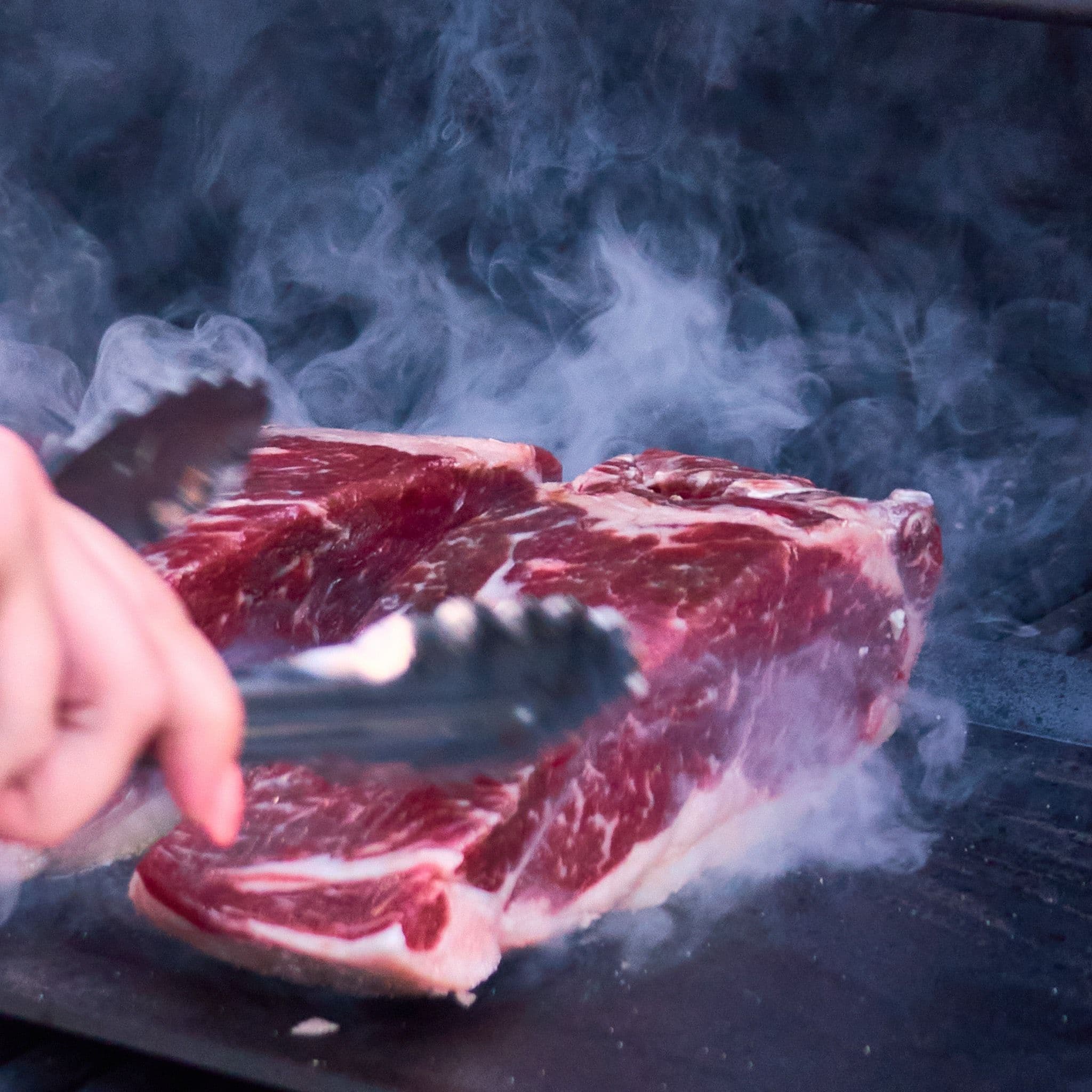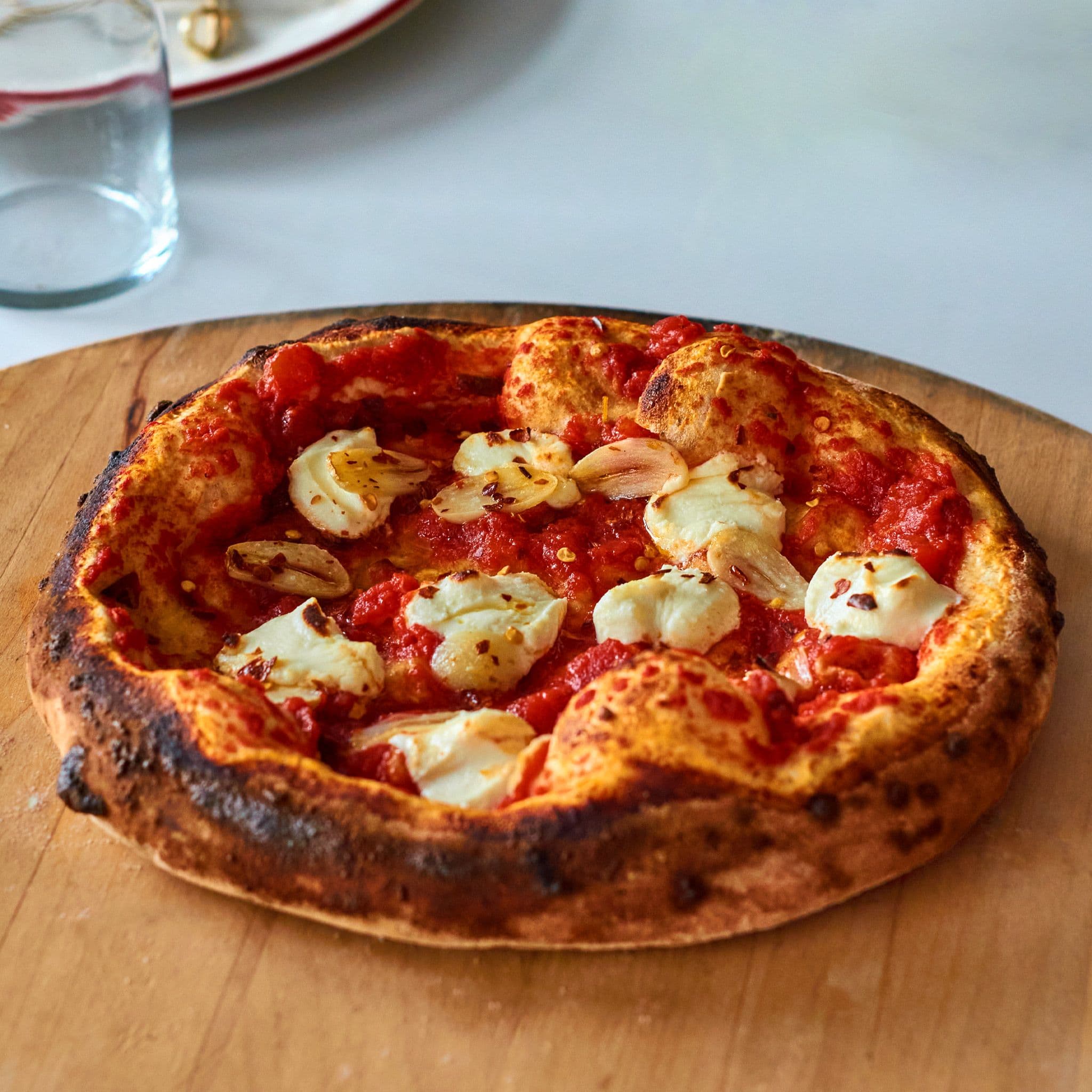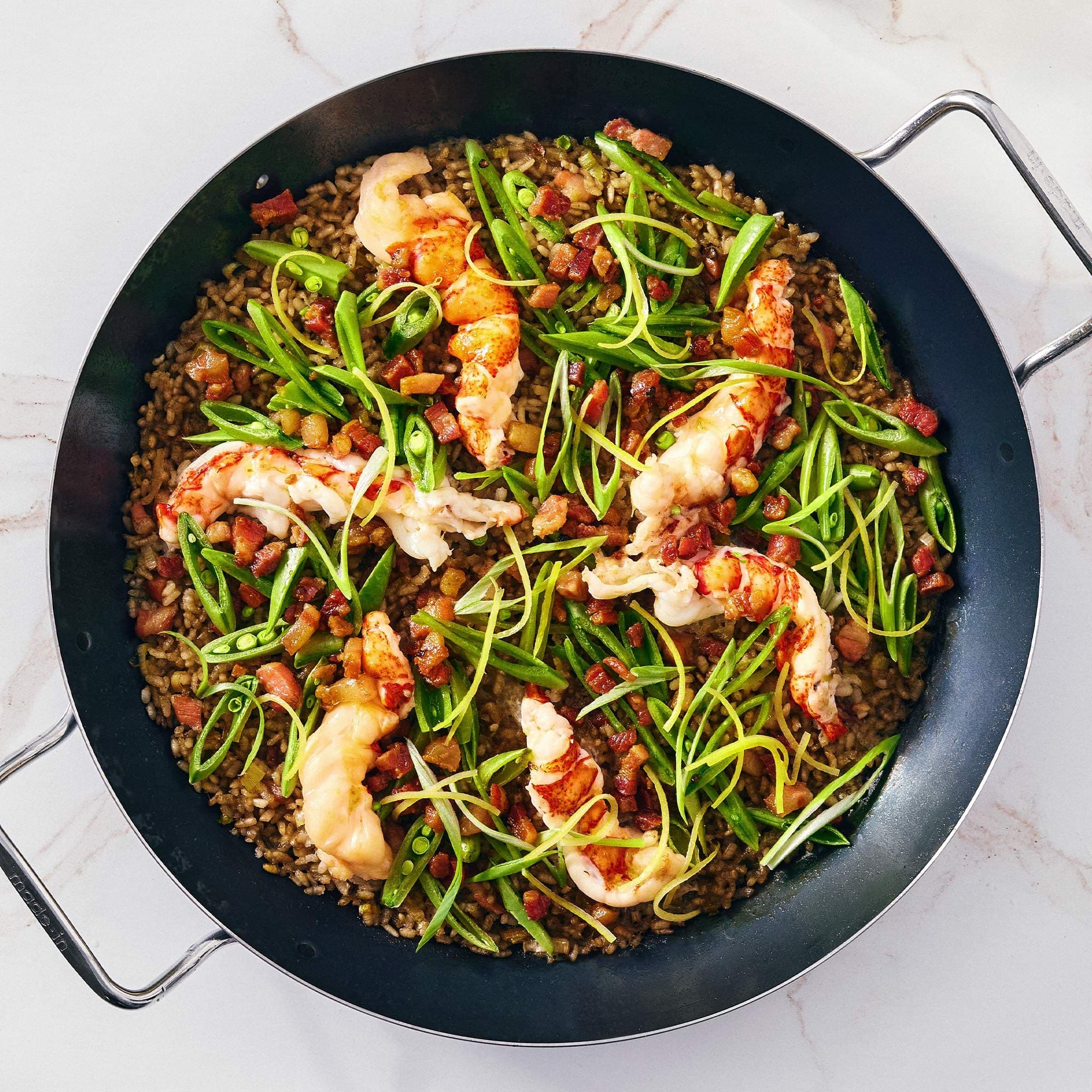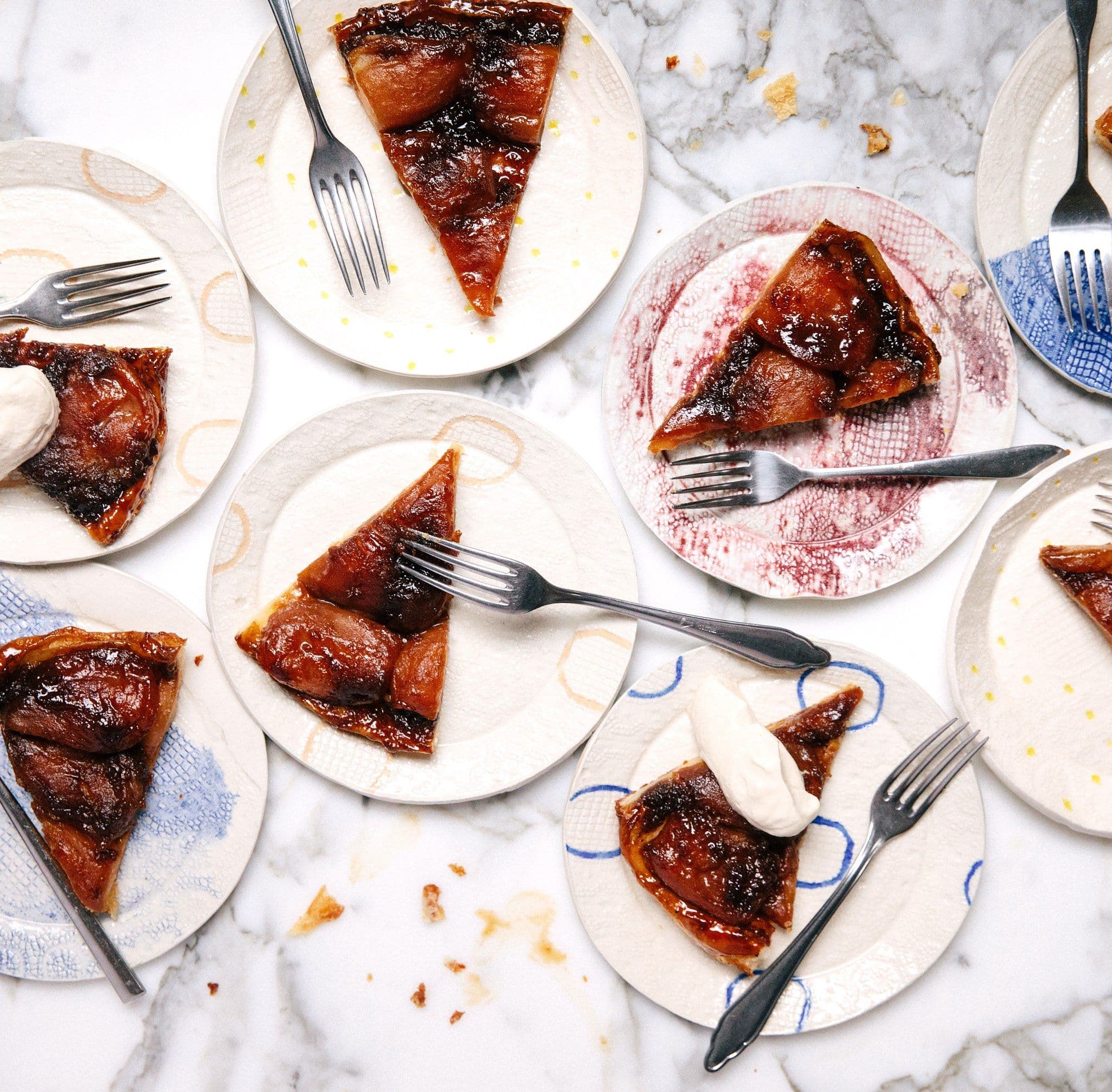There are plenty of ways to cook a steak, but there’s only one way we swear by for most cuts, and that’s pan-searing. Grill-heads, we hear you, but think of all the drippings lost through fiery grates. Cooking steak in a pan ensures all that jus stays where it needs to be: with the steak. Drippings secured, pan-searing allows the steak’s entire surface to touch direct heat, leading to a fully caramelized (read: delicious) crust on all sides.
To learn the keys directly from a Culinista chef, book a cooking class.
The Equation for Success:
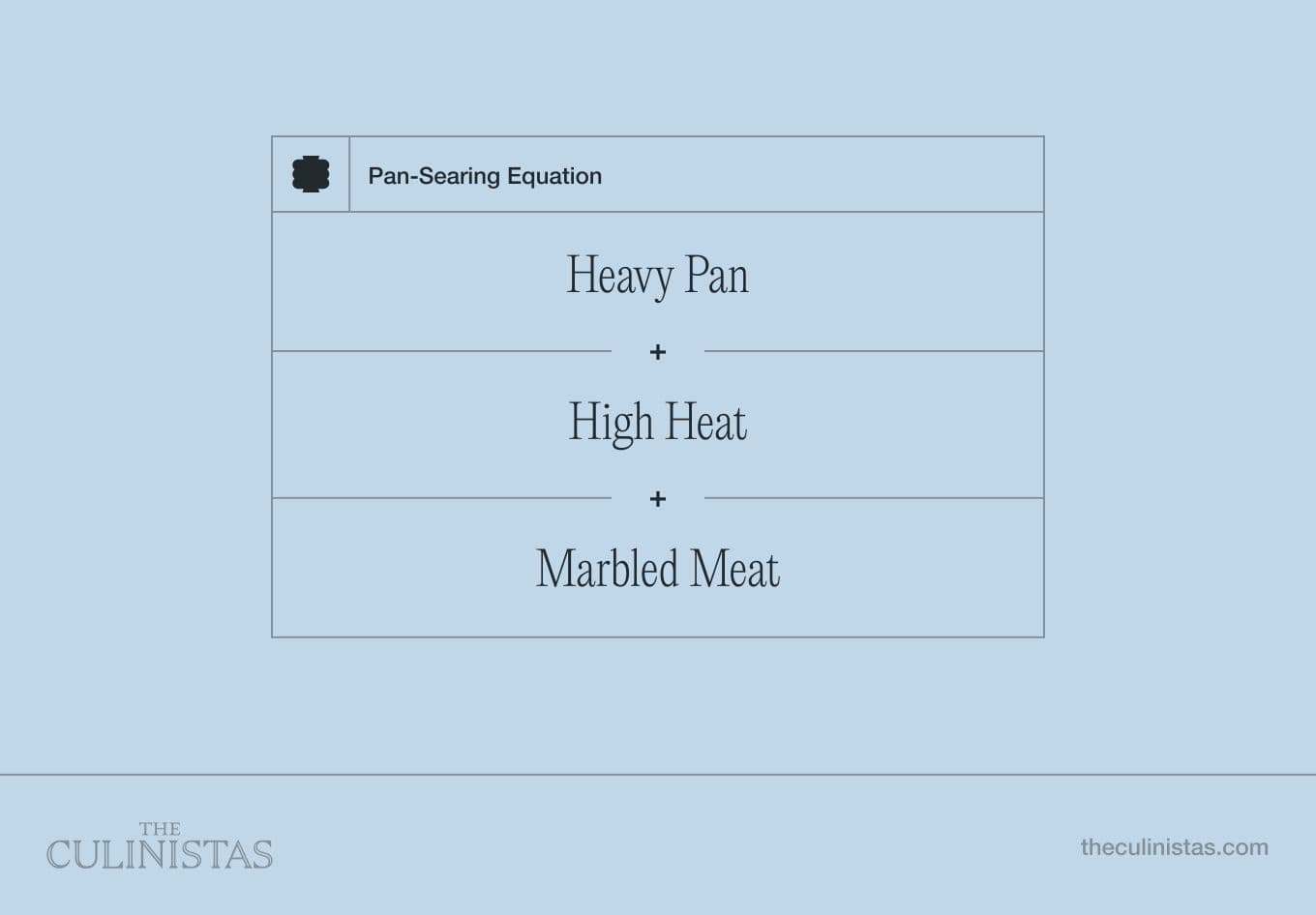
Below, you’ll learn all the keys to searing success: which cuts of meat work best, other ingredients needed, internal cooking temperatures, equipment, and step-by-step cooking instructions.
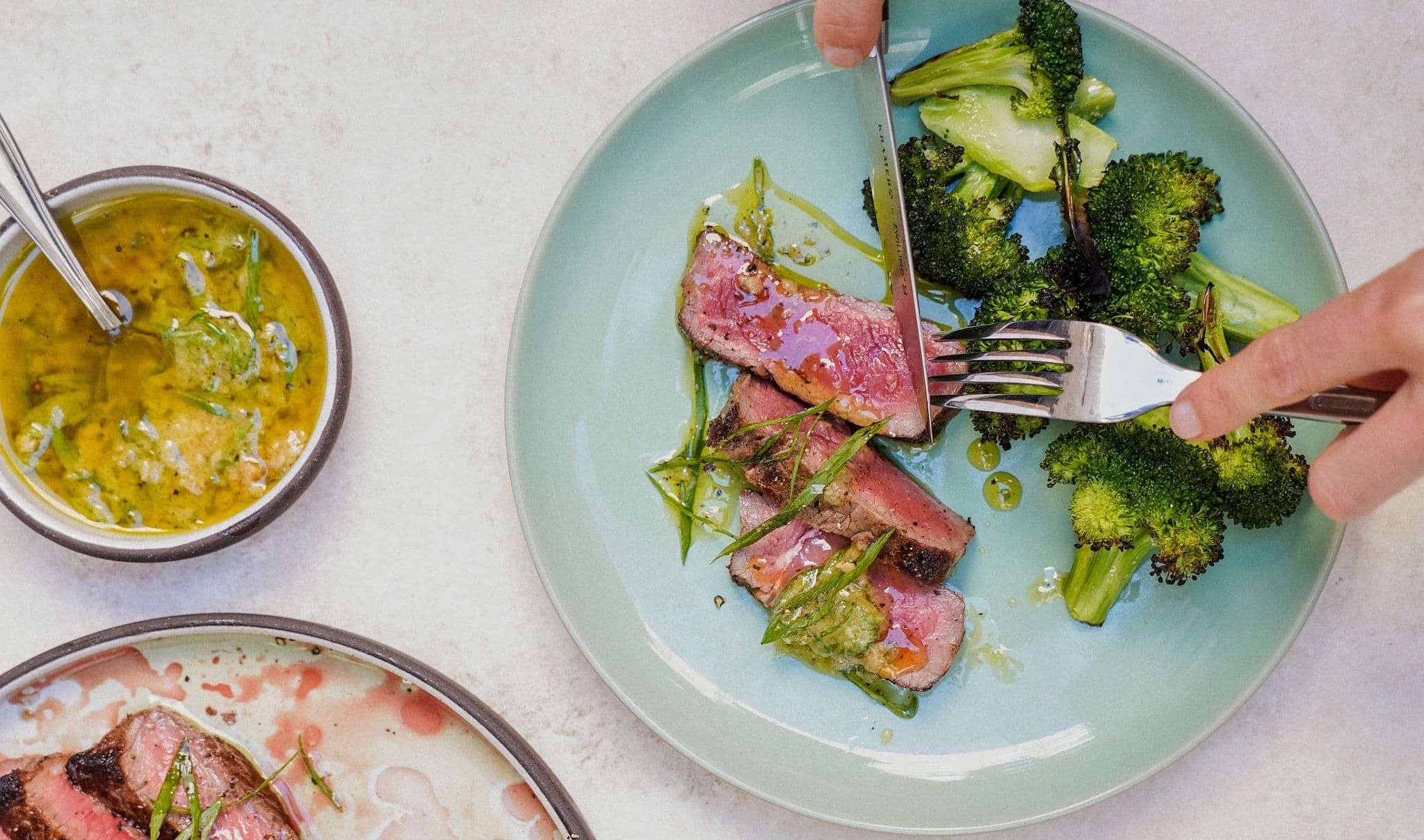
Cuts of Meat
Just about any cut of beef branded “steak” can be pan-seared (stay away from other cuts like chuck roast, beef shanks, or brisket, whose tougher meat requires a long, low braise). That said, if you’re using a steak thicker than two inches, it’ll need a short time in the oven after searing. Cuts thinner than two inches will cook through just fine on the stovetop. Here are some of our favorite steaks:
Ribeye
New York Strip
Filet Mignon
Sirloin
Chef Tip
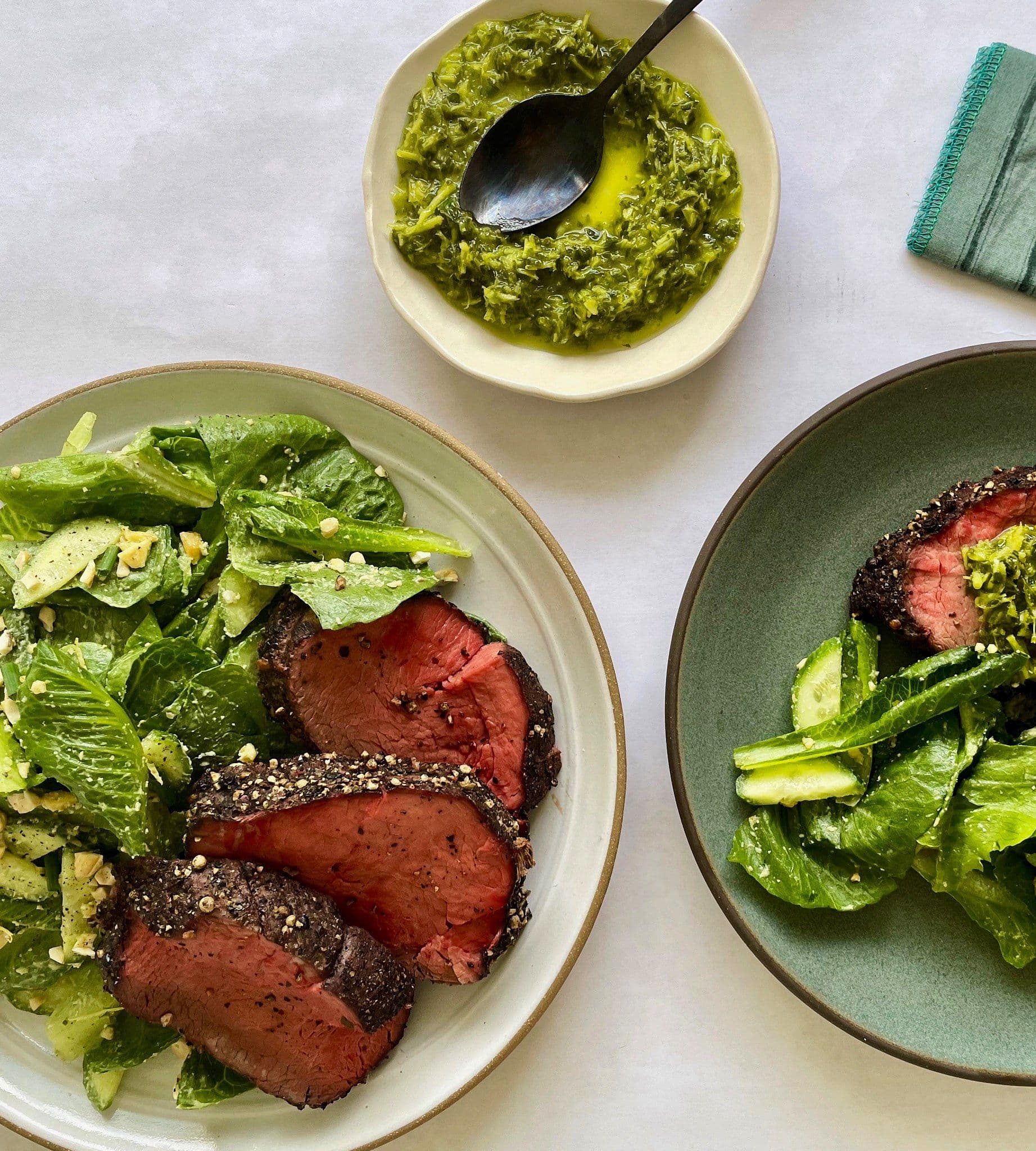
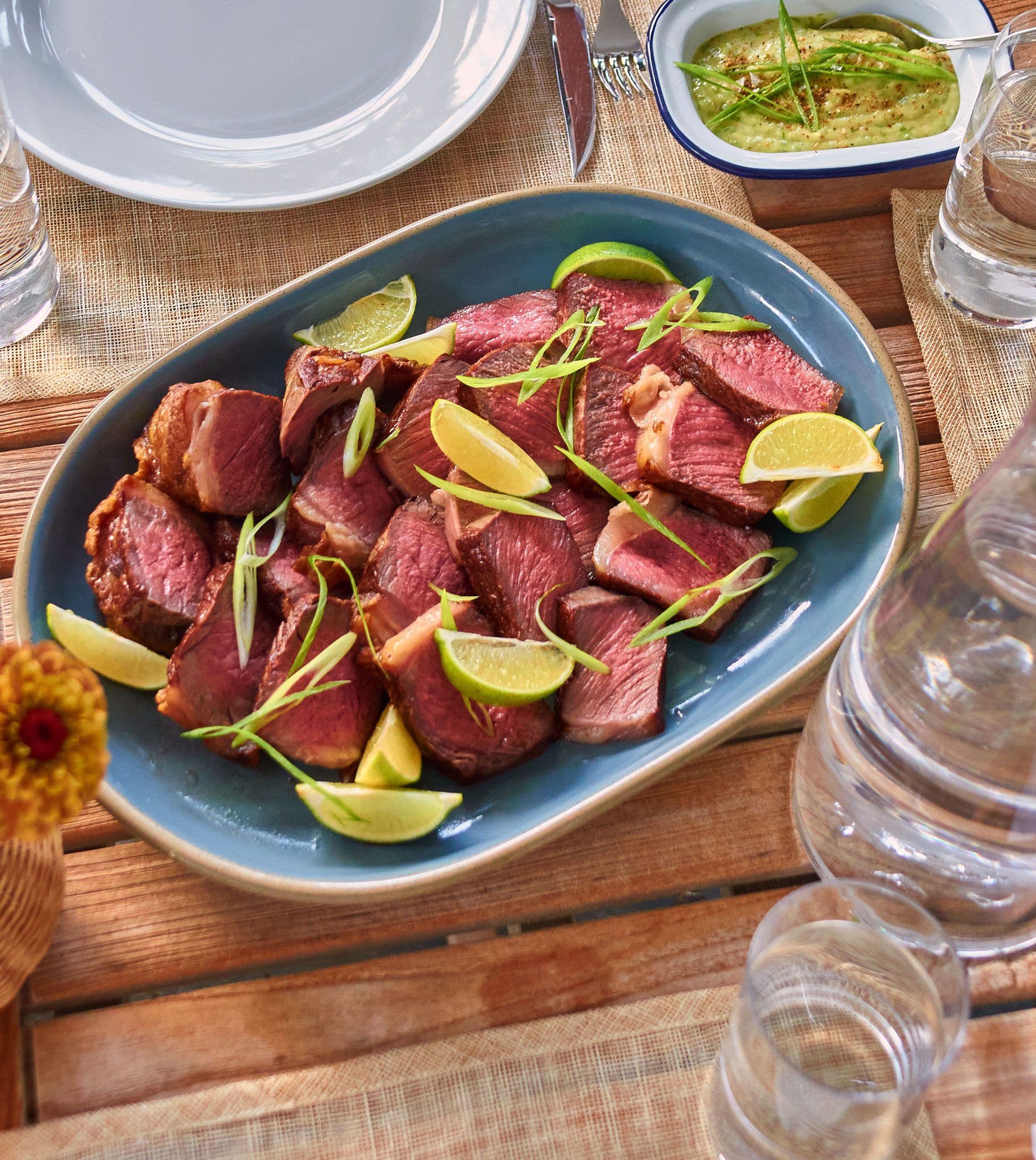
Internal Temperatures
Steak will continue to cook after it is off the heat, so it's best to remove it from the pan when it’s a few degrees under the desired temperature. We highly recommend using a meat thermometer when cooking steak because it’s the only way to accurately gauge the level of doneness.
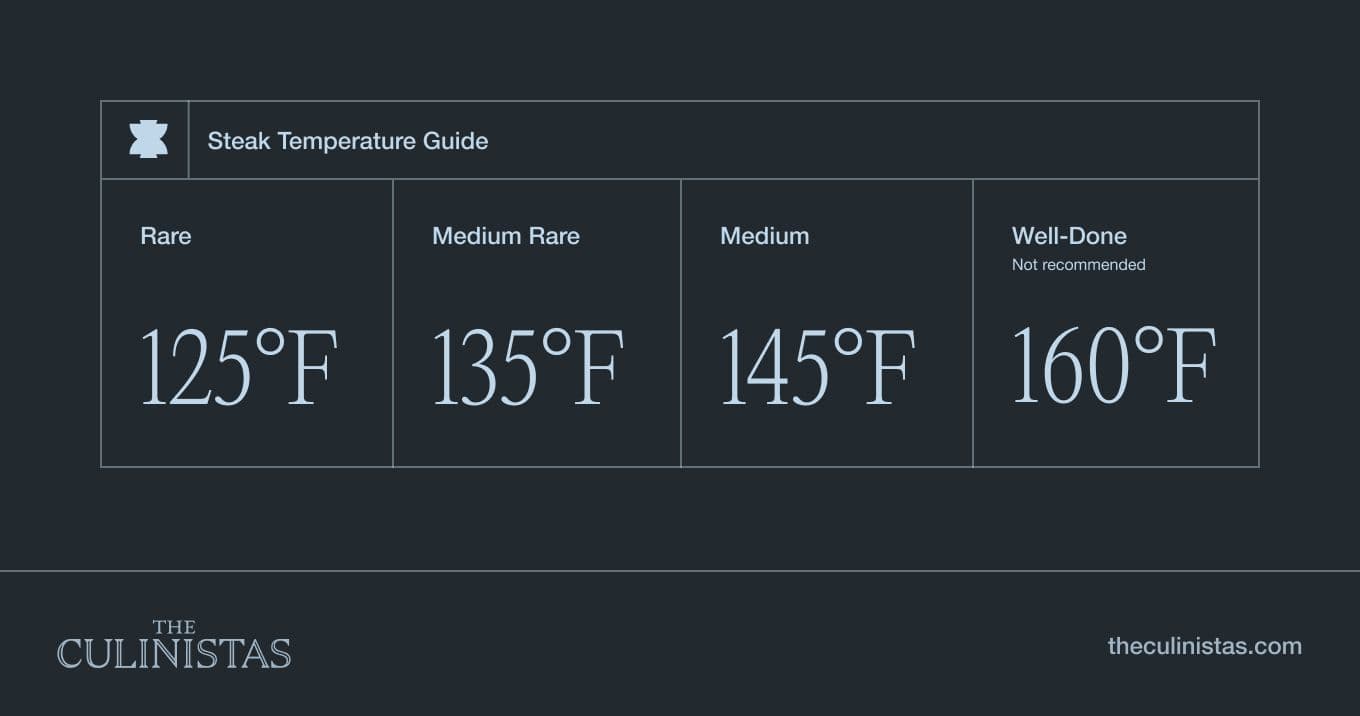
Ingredients
Essential Ingredients:
Steak
Salt
Oil
Flavor Boosting Ingredients:
Butter
Garlic
Hard Stem Herbs
Type of Pan
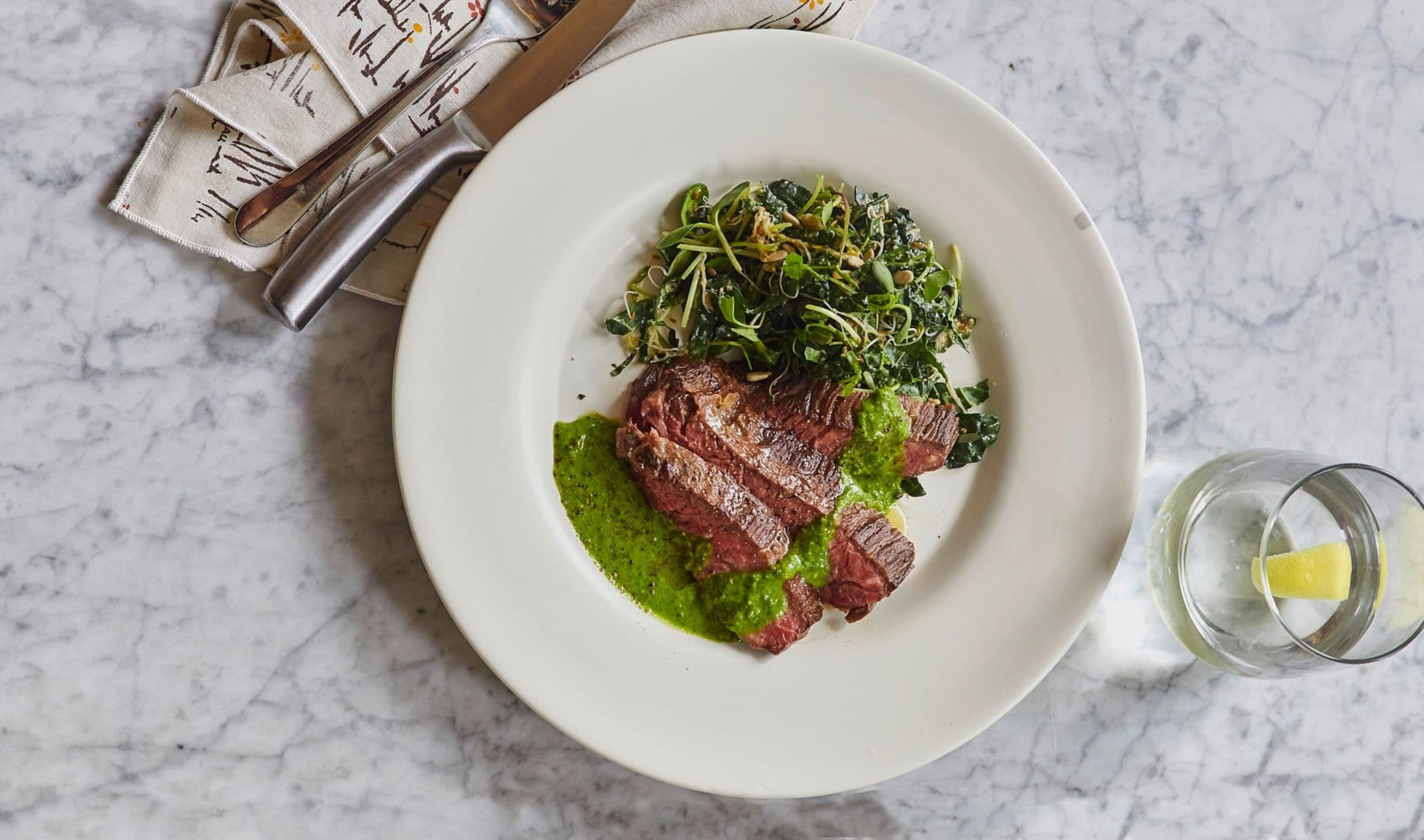
Step By Step
1.
Season the steak
Pat the steak with a paper towel until dry, then season generously with salt on both sides. You should be able to see a thin layer of salt on the exterior of the steak when it is properly seasoned. Keep the pepper off the steak until plating because direct heat can burn pepper and result in a bitter taste.
2.
Temper the steak
Bringing meat to room temperature for about 30 minutes before cooking allows the steak to cook more evenly; when a steak is taken directly from the refrigerator and placed on a hot grill or pan, the exterior of the steak cooks faster than the interior. This can result in an unevenly cooked steak, with a well-done exterior and an undercooked center.
3.
OPTIONAL
Preheat the oven
If using a cut thicker than 2 inches, preheat your oven to 425°F for later; steaks thinner than 2 inches will cook faster and not require time in the oven.
4.
Heat the oil
Heat your skillet over high heat. Once it’s hot, add 1-2 TB high-heat oil like grapeseed or avocado. The skillet must be hot enough that the oil shimmers and begins to smoke.
5.
Sear the steak
Add the steak to the skillet and cook for 3-4 minutes on each side until a crust forms.
6.
OPTIONAL
Add the butter & herbs
Add a tablespoon of butter to the skillet and let it melt. Add garlic or herbs and baste the steak with the aromatic butter.
7.
OPTIONAL
Transfer to the oven
If using a cut thicker than 2 inches, transfer the skillet to the preheated oven and cook for 5-10 minutes depending on the desired doneness. Use your meat thermometer to check the internal temperature of the steak at this point.
8.
Rest the steak
Remove the skillet from the oven and let the steak rest for 5-10 minutes before slicing. Resting the steak allows for its natural juices to redistribute throughout the meat.
Chef's Tip
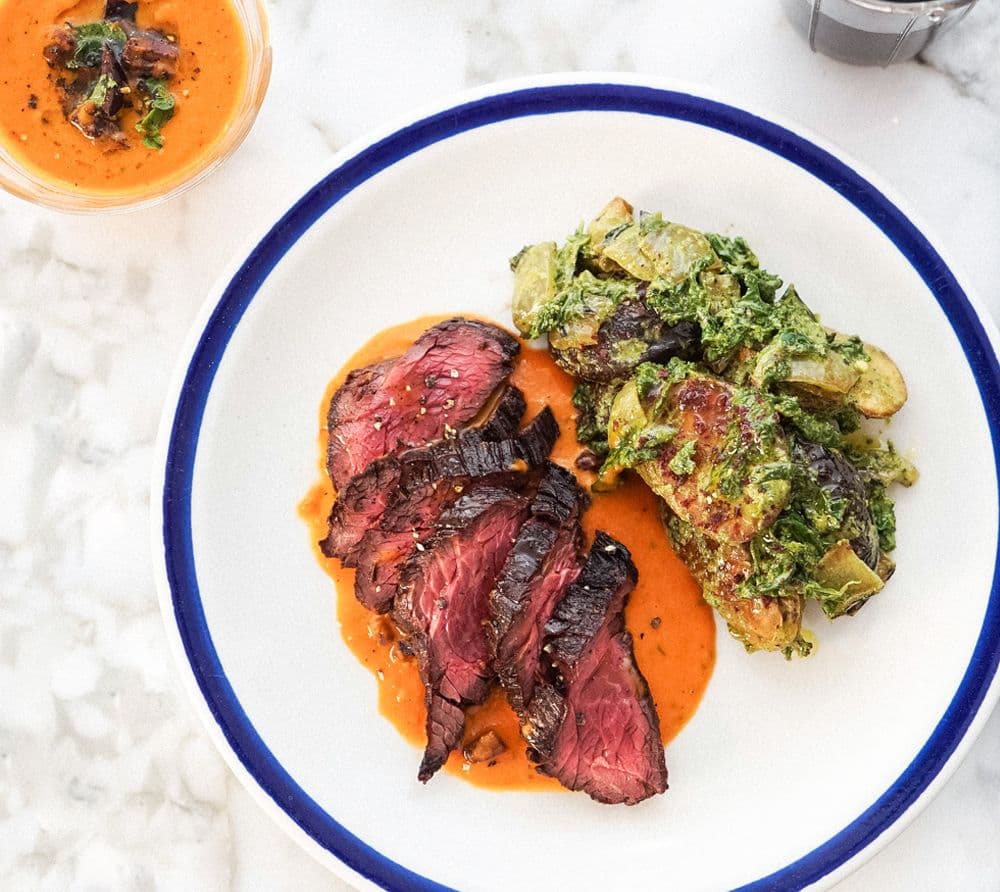
Cooking Class
